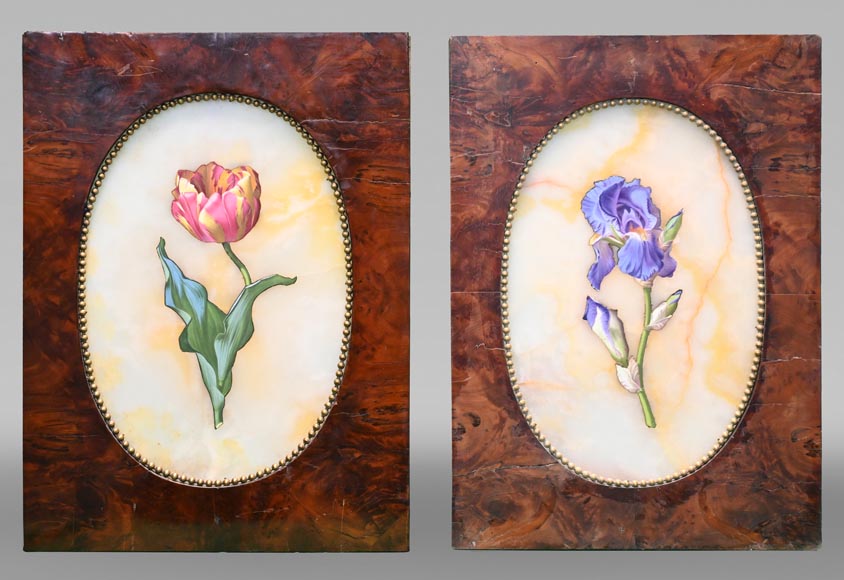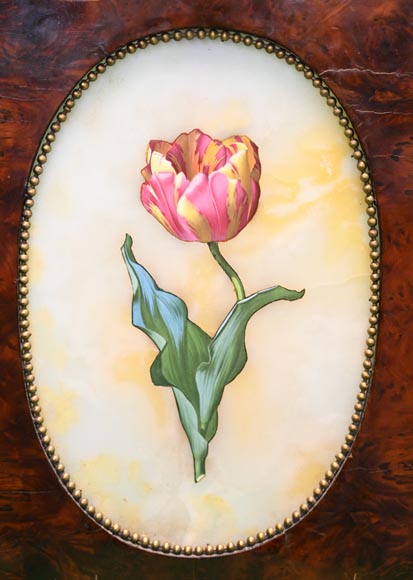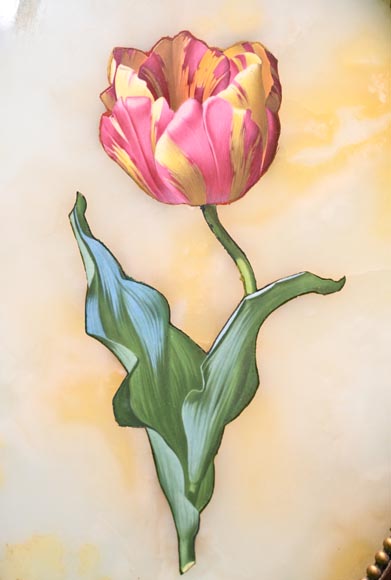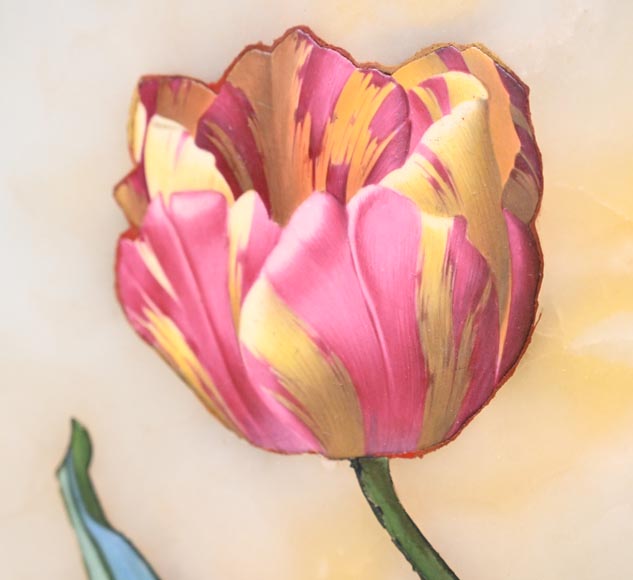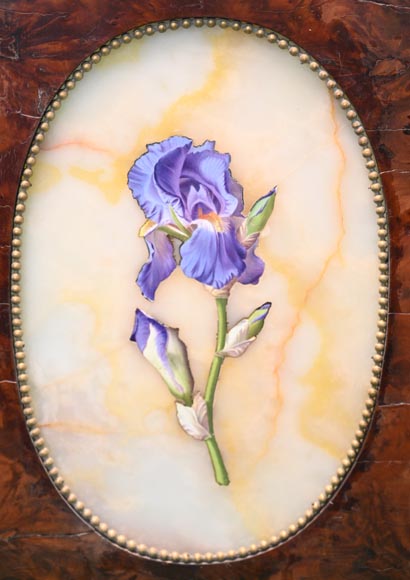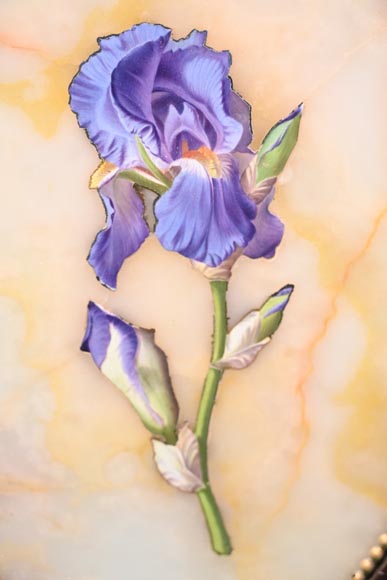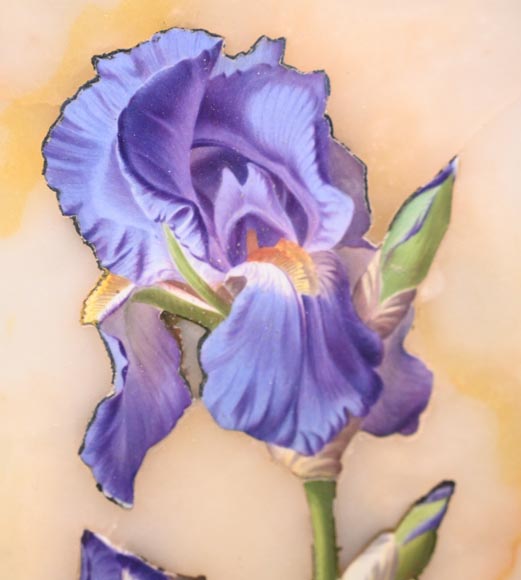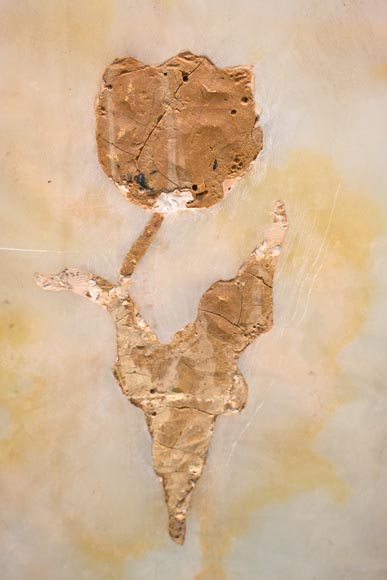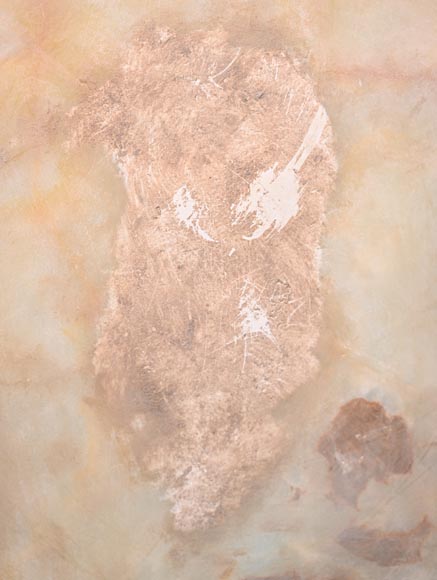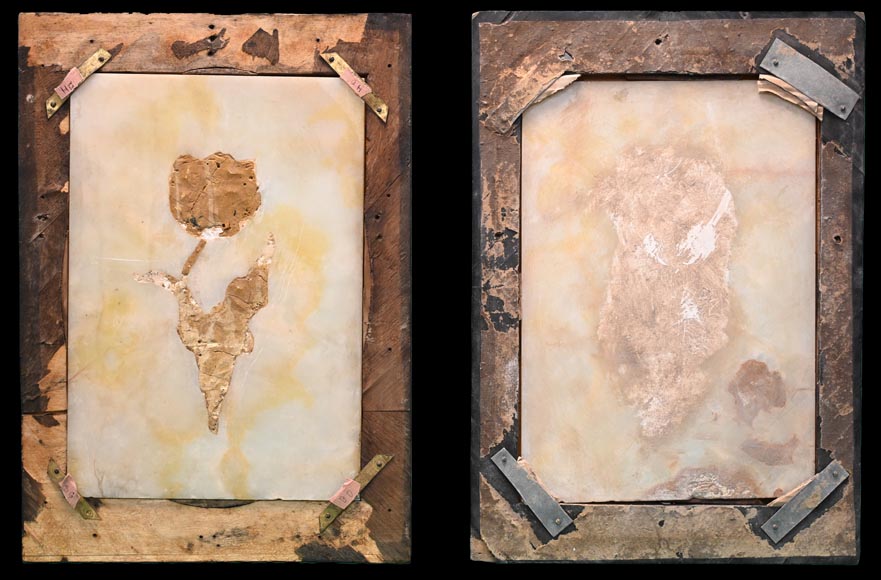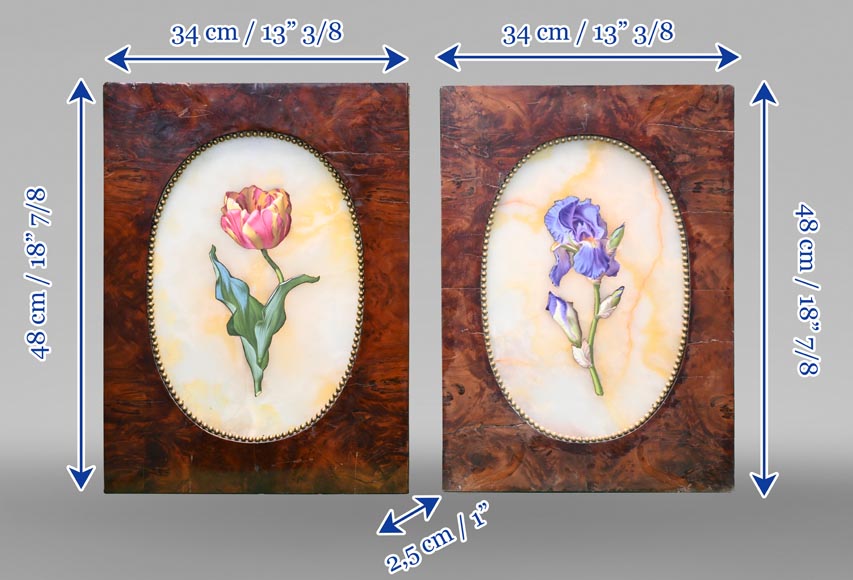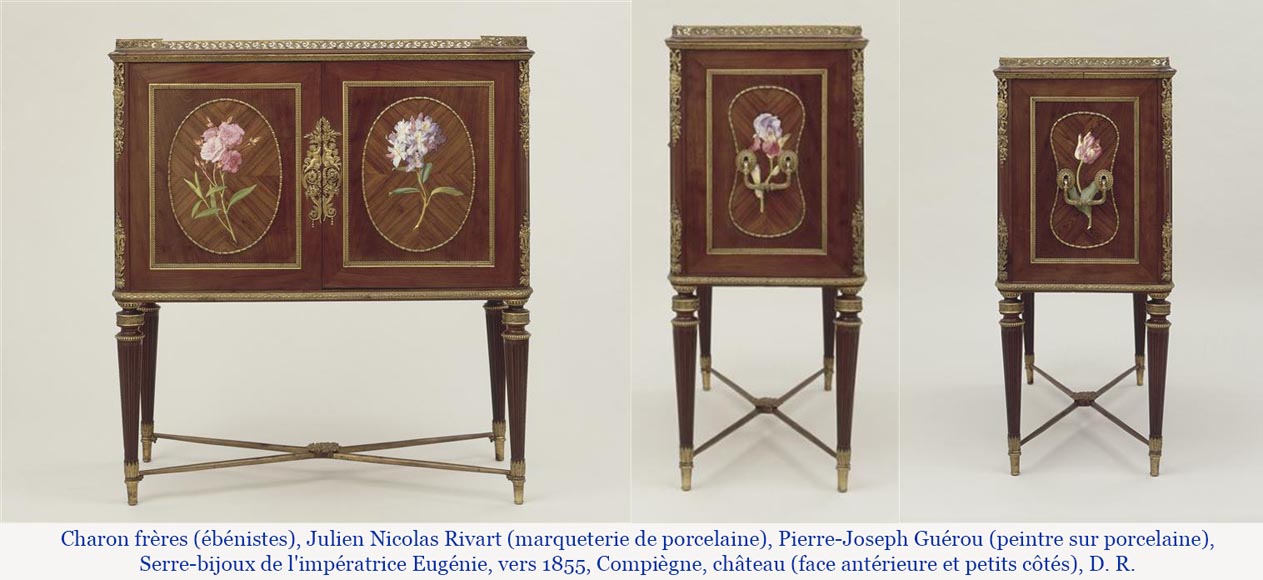Style Napoleon III / Ref.15092
Julien Nicolas RIVART, Two Alabaster Panels Inlaid with a Tulip and an Iris in Porcelain, after 1849
Dimensions
Width 13'' ⅜ 34cm
Height 18'' ⅞ 48cm
Depth: 1'' ⅛ 3cm
Origin:
France
Status:
Good condition
Julien Nicolas Rivart (Paris, 1802-1867), noted in archives as a porcelain gilder, bronze manufacturer, and maker of bronzes and porcelains, is particularly renowned for his 1849 patent on a technique for inlaying soft-paste porcelain into various materials. He specifically mentioned “wood, [...] copper, marble, and all other stones” as possible substrates. Over time, additional certificates allowed him to employ all types of French and English porcelain, eventually extending to porcelains of all origins, along with modifications to his process. Rivart was the sole practitioner of this innovative technique, even after the patent expired. His work was displayed at various exhibitions, where it was awarded medals.
These two panels were created using Rivart’s groundbreaking porcelain marquetry technique. The process involved molding soft-paste porcelain, firing it at a high temperature, and then grinding it to achieve a smooth surface. The pieces were glazed, fired again, painted, and finally heated to set the colors. The porcelain elements were then embedded into a selected material – here, alabaster – using marquetry methods. The backgrounds of the works were leveled with a special paste.
These panels are of exceptional quality. Two finely painted porcelain flowers are inlaid into oval-shaped alabaster plaques, bordered with a bead frieze that transitions seamlessly into a rectangular wooden frame. The first flower is a tulip, rendered with outstanding naturalism, while the second is a branch of iris featuring four blooms at varying stages of development. The petals are depicted with extraordinary precision.
Rivart’s craftsmanship is particularly remarkable here. It is rare for him to use alabaster as a base for his porcelain compositions. Furthermore, the marquetry flowers are entirely crafted from porcelain, which is not always the case in his work. The panels are framed in amboyna burl, an exotic and prized wood frequently used in marquetry, further enhancing their value. The choice of materials and the meticulous craftsmanship position these panels among the most valuable works by Rivart.
The detailed representation of the flowers aligns with the burgeoning interest in horticulture during the 19th century. The iris depicted is a “bearded iris”, while the tulip resembles a “triumph tulip”.
A jewelry chest belonging to Empress Eugénie, an exceptionally refined piece, features two porcelain marquetry motifs on its shorter sides that are similar to those on these panels.
Informations
Price: on request
Recommended for you :
Dimensions:
Height: 36
Dimensions:
Width: 104
Height: 101
Dimensions:
Height: 5
Diameter: 51
Dimensions:
Width: 21
Height: 35
Depth: 5
Dimensions:
Width: 34
Height: 17
Depth: 20
Dimensions:
Width: 42
Height: 33
Depth: 32
Dimensions:
Width: 19
Height: 16
Dimensions:
Width: 96
Height: 38
Depth: 80
Dimensions:
Width: 45
Height: 74
Depth: 34
Dimensions:
Width: 27
Height: 36
Dimensions:
Width: 11
Height: 15
Depth: 11
Dimensions:
Height: 38
Diameter: 15



